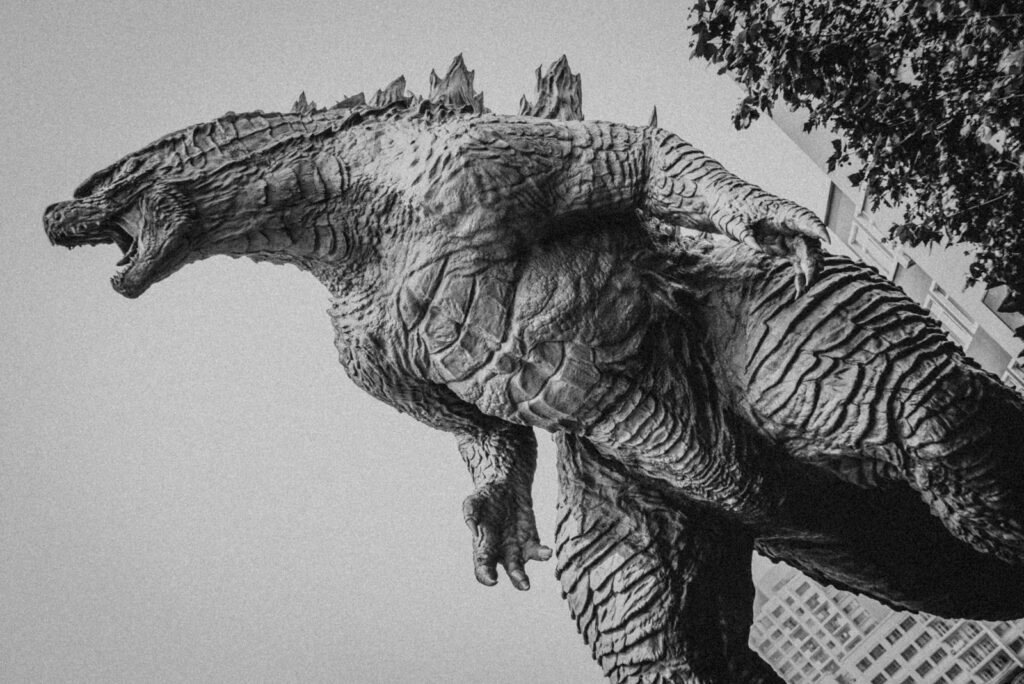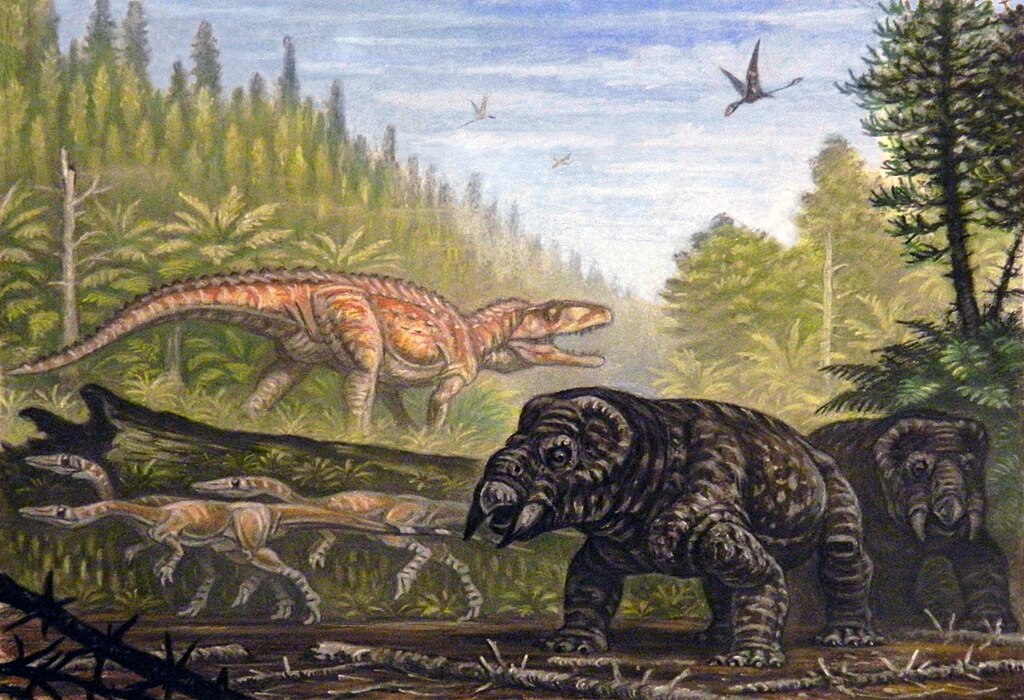The prehistoric world was home to some of the most colossal creatures ever to walk the Earth. Dinosaurs dominated terrestrial ecosystems for over 165 million years, with some species evolving to truly staggering proportions. These giant dinosaurs continue to captivate our imagination, with their massive fossils drawing crowds to museums worldwide. Recent paleontological discoveries have further expanded our understanding of these magnificent creatures, revealing new species and more accurate size estimates. This article explores the biggest dinosaurs ever discovered, examining their characteristics, where they lived, and where you can see their remarkable remains today.
Argentinosaurus: The Heavyweight Champion

Argentinosaurus huinculensis currently holds the title of the largest dinosaur supported by substantial fossil evidence. Discovered in Argentina in 1987, this titanosaur sauropod lived approximately 95-100 million years ago during the Late Cretaceous period. Estimates suggest Argentinosaurus reached lengths of 30-40 meters (98-131 feet) and weighed between 70-100 metric tons. Despite its enormous size, paleontologists have only recovered partial remains, including vertebrae, ribs, and leg bones. The most complete Argentinosaurus fossils can be viewed at the Museo Municipal Carmen Funes in Plaza Huincul, Argentina, where visitors can appreciate the sheer scale of this prehistoric giant through both original fossils and reconstructions.
Patagotitan: The Recently Crowned Giant
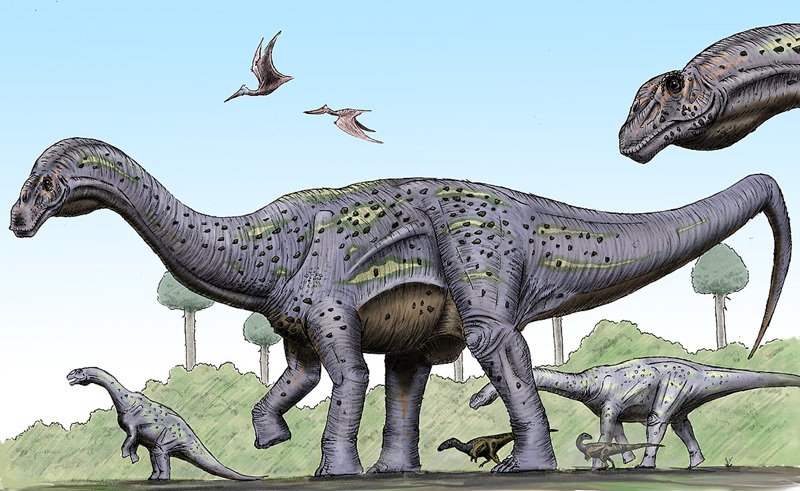
Patagotitan mayorum made headlines in 2014 when paleontologists unearthed its remains in Argentina’s Patagonia region. This titanosaur lived approximately 101-97 million years ago during the Late Cretaceous period and represents one of the most complete giant dinosaur skeletons ever found. Scientists estimate Patagotitan measured between 37-40 meters (121-131 feet) in length and weighed around 69 tons. What makes Patagotitan particularly special is the completeness of its remains, with researchers discovering approximately 150 bones from six different individuals at a single site. Visitors can marvel at a full-scale cast of Patagotitan at the American Museum of Natural History in New York City, where the 122-foot skeleton extends beyond the exhibition hall.
Supersaurus: The Longest Sauropod

Supersaurus vivianae may have been the longest dinosaur ever discovered, with recent analysis suggesting it reached lengths of up to 39-42 meters (128-138 feet). First discovered in Colorado in 1972, this diplodocid sauropod lived during the Late Jurassic period, approximately 153 million years ago. While not as heavy as some titanosaurs, weighing approximately 35-40 tons, Supersaurus boasted an impressively long neck and tail that contributed to its extreme length. Recent research published in 2021 has led to revised size estimates, making Supersaurus a contender for the longest dinosaur. Visitors can see Supersaurus remains at the Wyoming Dinosaur Center in Thermopolis, Wyoming, which houses several vertebrae and other elements from this magnificent creature.
Dreadnoughtus: The “Fears Nothing” Giant

Dreadnoughtus schrani, whose name translates to “fears nothing,” was discovered in Argentina and described in 2014. This titanosaur lived approximately 77 million years ago during the Late Cretaceous period and represents one of the most complete giant sauropod skeletons ever found, with about 70% of its post-cranial bones recovered. Scientists estimate Dreadnoughtus measured about 26 meters (85 feet) in length and weighed approximately 65 tons. What makes this discovery particularly valuable is that many of the recovered bones were found in their original positions, providing valuable information about the dinosaur’s anatomy and posture. The original fossils are housed at the Museo Paleontológico Egidio Feruglio in Trelew, Argentina, though casts can be seen at various museums worldwide, including the Drexel University Academy of Natural Sciences in Philadelphia.
Mamenchisaurus: The Neck Champion
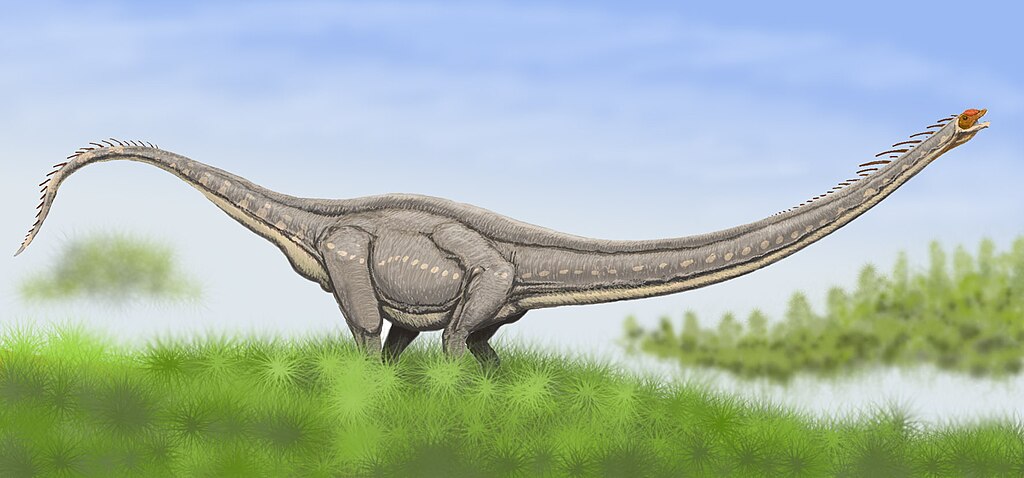
Mamenchisaurus sinocanadorum stands out among giant dinosaurs for having the longest neck of any known dinosaur, measuring up to 15 meters (49 feet) – roughly half of its total body length. This mamenchisaurid sauropod lived during the Late Jurassic period, approximately 160 million years ago, in what is now China. While not the heaviest dinosaur at an estimated 30-35 tons, Mamenchisaurus had an extraordinary anatomical feature in its extremely elongated cervical vertebrae, allowing for its remarkable neck length. This adaptation likely evolved to reach vegetation in tall trees without having to move its massive body. Impressive fossils of various Mamenchisaurus species can be viewed at several museums throughout China, with the best specimens housed at the Zigong Dinosaur Museum in Sichuan Province, where visitors can witness the remarkable neck proportions of this unique sauropod.
Sauroposeidon: The “Earthquake God Lizard”

Sauroposeidon proteles, whose name means “earthquake god lizard,” was potentially one of the tallest dinosaurs ever discovered, possibly reaching heights of 18 meters (59 feet) with its neck fully extended. Discovered in Oklahoma in 1994, this brachiosaurid sauropod lived during the Early Cretaceous period, approximately 110 million years ago. While not as heavy as titanosaurs at an estimated 55-60 tons, Sauroposeidon had incredibly elongated neck vertebrae that contributed to its impressive height. The few recovered fossils include four massive neck vertebrae measuring nearly 1.4 meters (4.6 feet) long each, suggesting an animal of extraordinary proportions. Visitors can see Sauroposeidon fossils at the Oklahoma Museum of Natural History in Norman, Oklahoma, which houses the original vertebrae that first stunned paleontologists with their massive size.
Brachiosaurus: The Iconic Giant
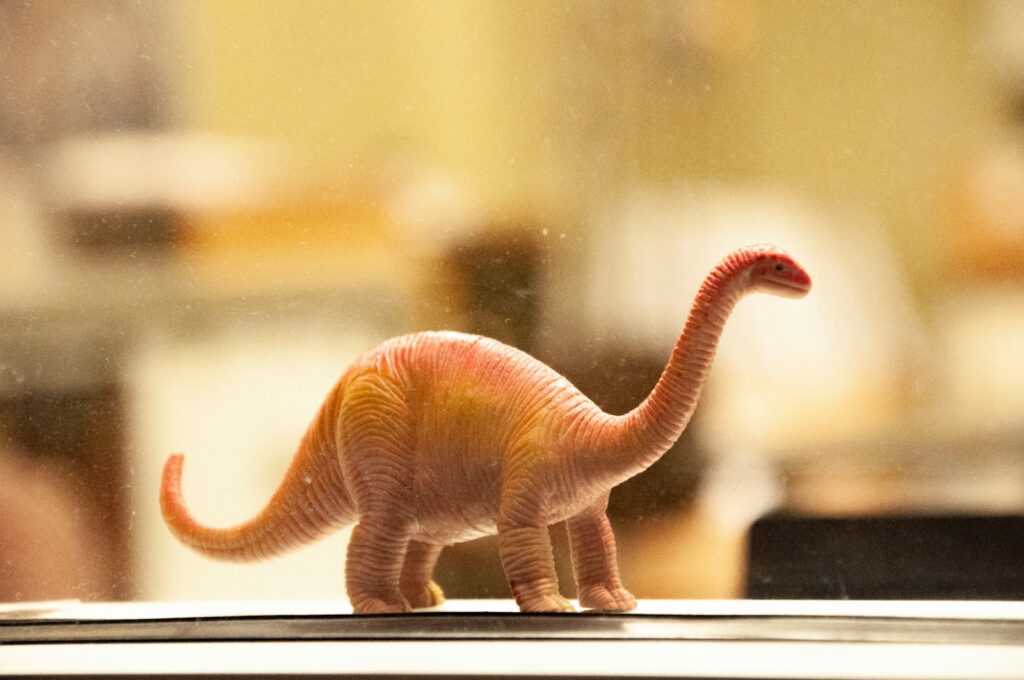
Brachiosaurus altithorax is perhaps the most recognizable giant dinosaur, famously featured in the original “Jurassic Park” film. This sauropod lived during the Late Jurassic period, approximately 154-153 million years ago, in what is now North America. Standing at approximately 13 meters (43 feet) tall and measuring around 26 meters (85 feet) in length, Brachiosaurus weighed an estimated 35-40 tons. Unlike many other sauropods, Brachiosaurus had longer front legs than back legs, giving it a distinctive upward-sloping posture that contributed to its impressive height. The most famous Brachiosaurus skeleton can be seen at the Field Museum of Natural History in Chicago, where a massive mounted skeleton (technically of the related Giraffatitan) has been inspiring visitors for generations, making it one of the most viewed dinosaur fossils in the world.
Diplodocus: The Museum Favorite
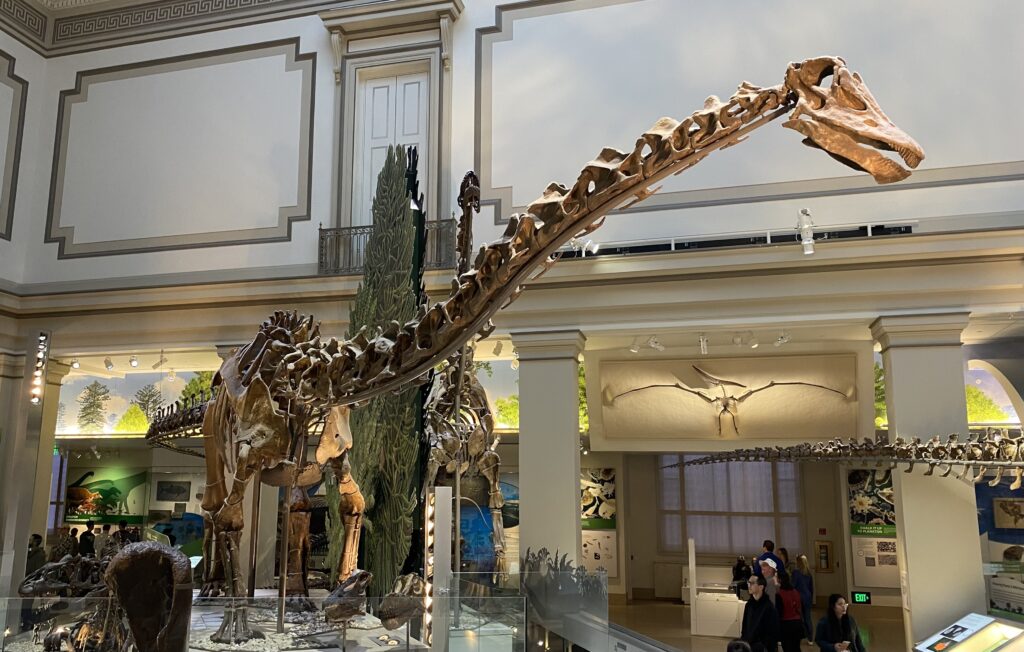
Diplodocus carnegii, while not the heaviest dinosaur, was one of the longest at approximately 26-27 meters (85-89 feet) from head to tail. Living during the Late Jurassic period, about 154-152 million years ago in what is now western North America, Diplodocus weighed a relatively modest 10-16 tons compared to other giant dinosaurs. This relatively lighter build was due to its hollow vertebrae – an adaptation that allowed for its extreme length while maintaining mobility. Diplodocus is one of the most widely displayed dinosaurs in the world, thanks to industrialist Andrew Carnegie, who funded expeditions that discovered the species and then commissioned replicas of the skeleton for museums worldwide. The original Diplodocus fossils can be seen at the Carnegie Museum of Natural History in Pittsburgh, Pennsylvania, while casts are displayed in prominent museums across Europe, including the Natural History Museum in London.
Blue Whale: The Modern Giant for Comparison
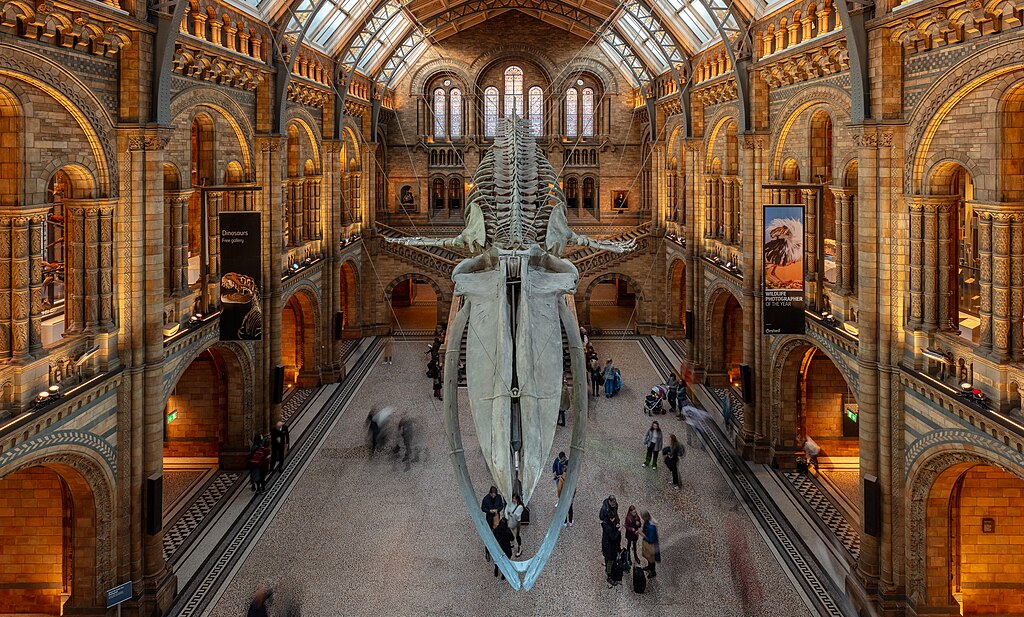
While not a dinosaur, the blue whale (Balaenoptera musculus) serves as an important reference point for understanding the size of giant dinosaurs. Currently the largest animal known to have ever existed on Earth, the blue whale can reach lengths of 30 meters (98 feet) and weigh up to 190 tons – significantly heavier than even the largest dinosaurs. This comparison helps contextualize prehistoric giants while highlighting that the current record for the largest animal ever belongs to a modern species. Blue whales achieve this massive size through their aquatic lifestyle, which supports their weight in ways not possible on land. Visitors can see impressive blue whale displays at major natural history museums worldwide, including the American Museum of Natural History in New York, which features a life-sized model, and the Natural History Museum in London, which houses a massive blue whale skeleton suspended from the ceiling of its main hall.
The Lost Titans: Controversial Giant Dinosaurs
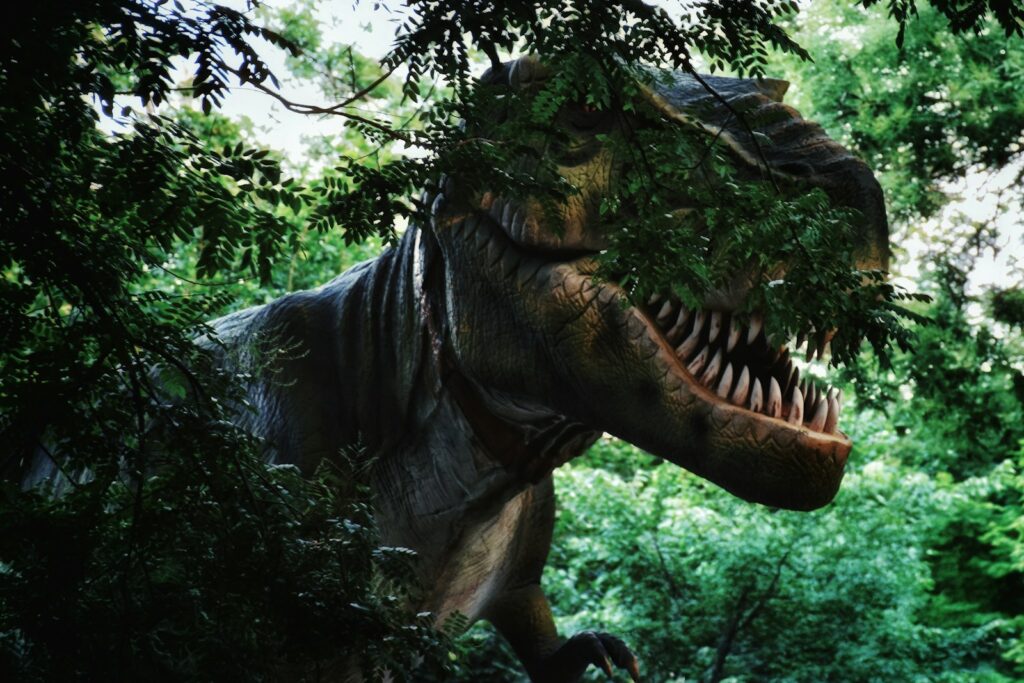
Several purported “largest dinosaurs” remain controversial due to incomplete fossil evidence. Amphicoelias fragillimus, described in 1878 from a single vertebra that has since been lost, may have reached lengths of 40-60 meters (131-196 feet) if size estimates are accurate. Similarly, Bruhathkayosaurus from India, potentially one of the largest dinosaurs ever at an estimated 40-44 meters (131-144 feet) long, is known only from fragmentary remains that have subsequently been lost. Maraapunisaurus, formerly classified as another Amphicoelias species, is estimated to have reached 30-32 meters (98-105 feet) in length based on limited evidence. These controversial giants highlight the challenges in accurately determining dinosaur sizes from incomplete remains. While no museum can display these dinosaurs’ original fossils, speculative reconstructions occasionally appear in special exhibitions at major natural history museums, usually accompanied by explanations about the limited evidence supporting these massive size estimates.
How Scientists Determine Dinosaur Size

Determining the size of giant dinosaurs presents significant challenges for paleontologists, who must work with often incomplete fossil records. Scientists typically use several methods to estimate size, including comparative anatomy with more complete related species, scaling from known bones to predict missing elements, and creating biomechanical models to test the plausibility of size estimates. Modern technology has improved these estimates, with CT scanning allowing examination of internal bone structures and computer modeling helping to determine weight distribution and possible postures. Scientists also consider limb bone circumference, which correlates strongly with body mass in living animals, and study bone histology to determine if specimens were fully grown. Visitors interested in learning about these methods can explore excellent exhibits at the American Museum of Natural History in New York and the Natural History Museum in London, where interactive displays explain the science behind determining dinosaur dimensions.
Notable Museum Collections Worldwide
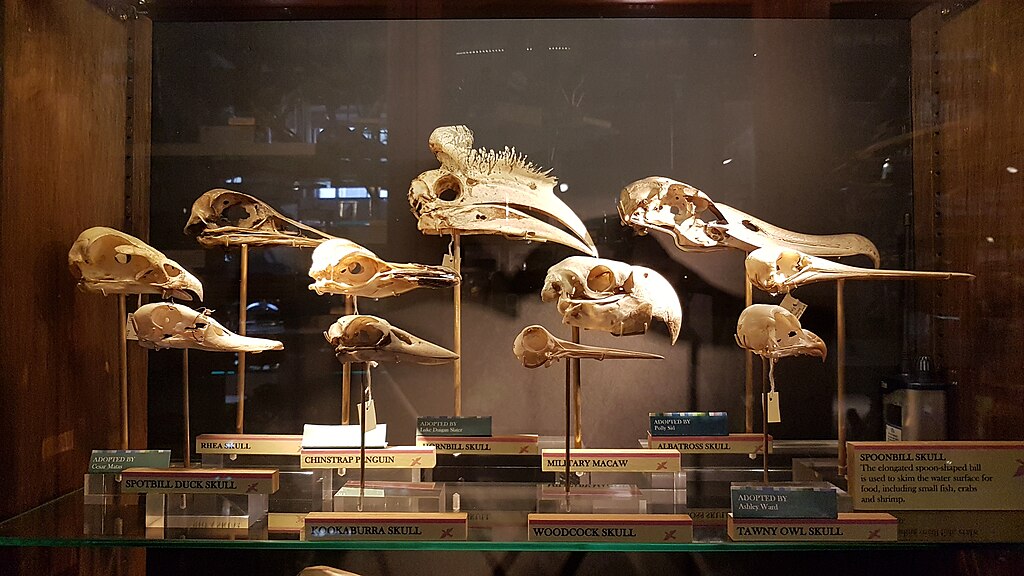
Beyond the specific museums mentioned with each dinosaur, several institutions offer exceptional collections of giant dinosaur fossils. The Royal Tyrrell Museum in Drumheller, Canada, houses impressive specimens including multiple giant sauropods in its “Dinosaur Hall.” In Europe, the Museum für Naturkunde in Berlin features the tallest mounted dinosaur skeleton in the world with its Giraffatitan (formerly Brachiosaurus) specimen standing 13.27 meters (43.5 feet) tall. The National Dinosaur Museum in Canberra, Australia, offers an excellent collection of local and international dinosaur fossils, including remains of several large sauropods. In Asia, the Zigong Dinosaur Museum in China’s Sichuan Province boasts numerous remarkably preserved specimens, including several massive sauropods nearly complete. For travelers planning a dinosaur-themed journey, these institutions represent essential destinations to witness the remarkable scale of Earth’s largest land animals.
Future Discoveries: The Search Continues

The search for the world’s largest dinosaurs remains an active area of paleontological research, with new discoveries constantly refining our understanding of these prehistoric giants. Several promising excavations are currently underway in Argentina’s Patagonia region, where many titanosaur fossils have been discovered. The Gobi Desert spanning Mongolia and China continues to yield remarkable fossils, with paleontologists optimistic about finding more giant dinosaur remains there. Advanced technologies like ground-penetrating radar are helping scientists locate fossils more efficiently, while improved excavation and preservation techniques allow for more complete specimens to be recovered. Digital modeling and 3D printing are revolutionizing how museums display these giants, creating lighter, more accurate reproductions that can travel to museums worldwide. The excitement of possibly discovering an even larger dinosaur keeps paleontologists in the field, suggesting our understanding of prehistoric giants may continue to evolve in the coming years.
Conclusion
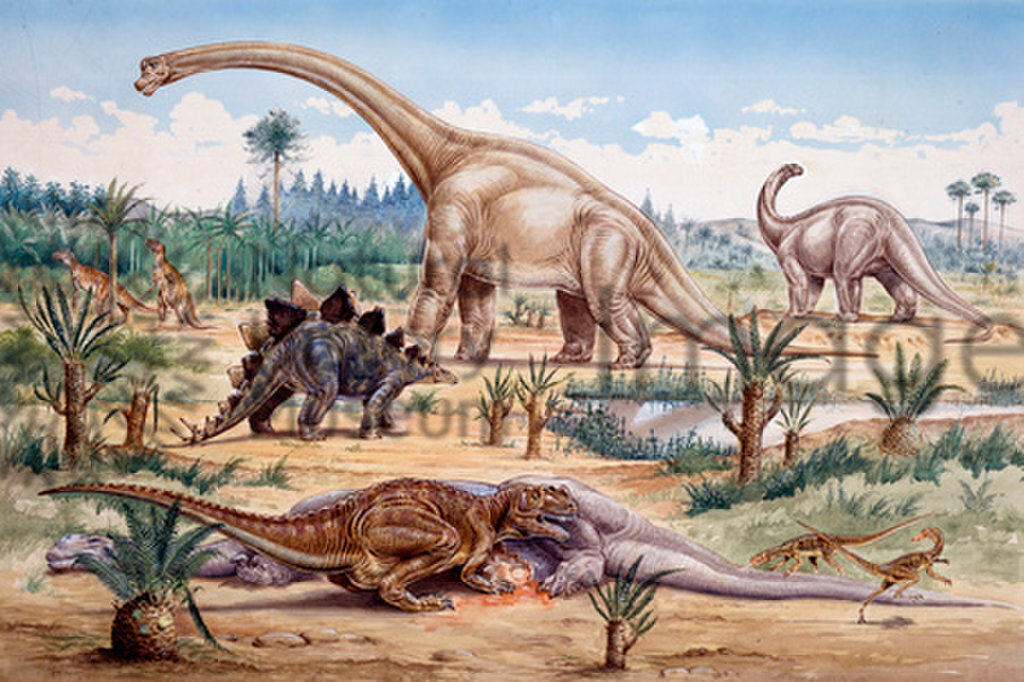
The biggest dinosaurs ever discovered represent the extremes of terrestrial animal evolution. From the heavyweight Argentinosaurus to the incredibly long-necked Mamenchisaurus, these giants pushed the boundaries of biological possibility. While we may never know with absolute certainty which dinosaur was the largest, each new discovery helps refine our understanding of these magnificent creatures. For those fascinated by these prehistoric titans, numerous museums around the world offer the opportunity to stand in the shadow of reconstructed skeletons and appreciate their truly awesome scale. As paleontological methods improve and new fossils are unearthed, our knowledge of Earth’s largest land animals continues to grow, ensuring that giant dinosaurs will captivate our imagination for generations to come.

